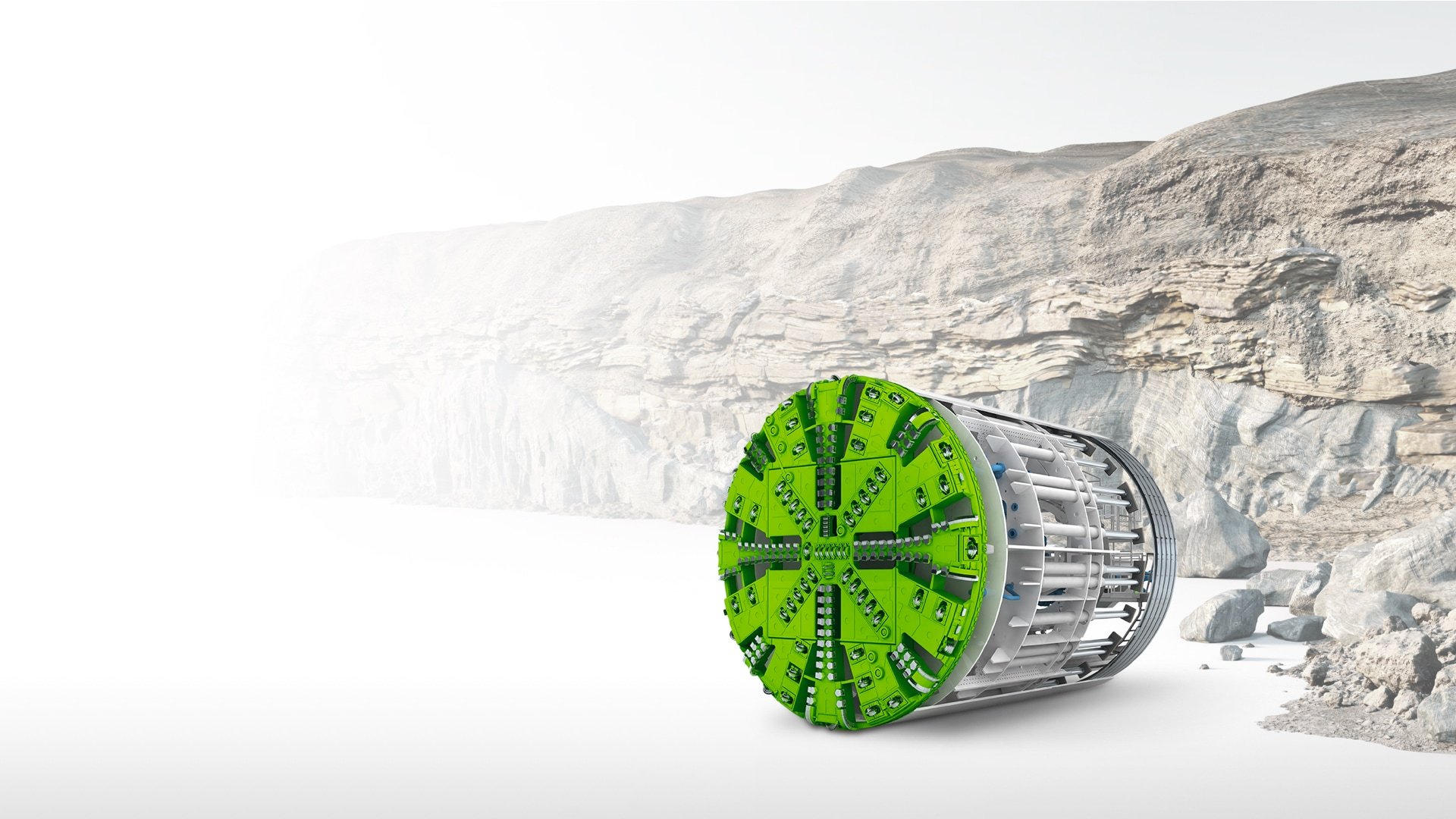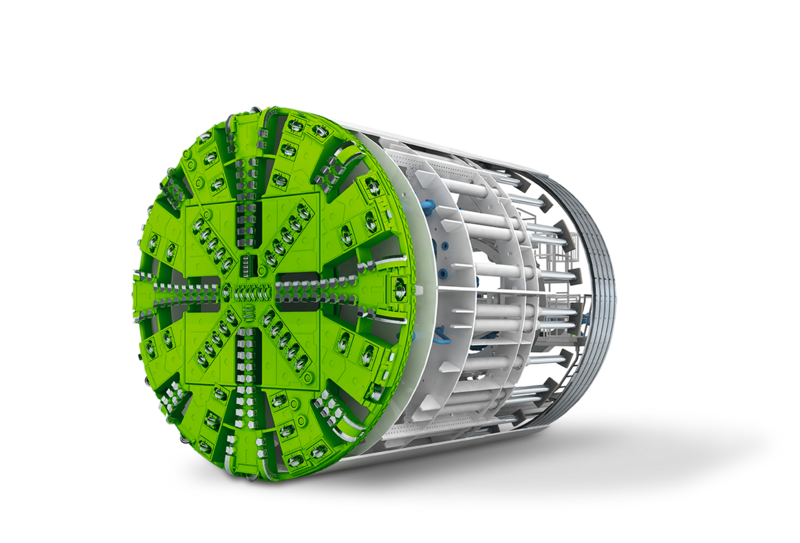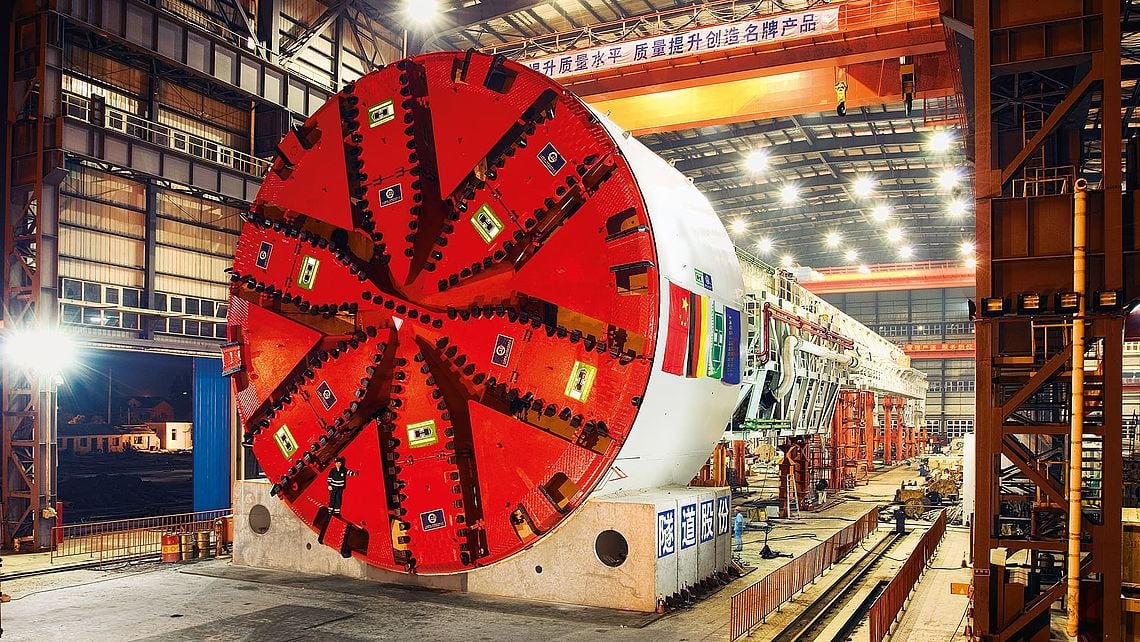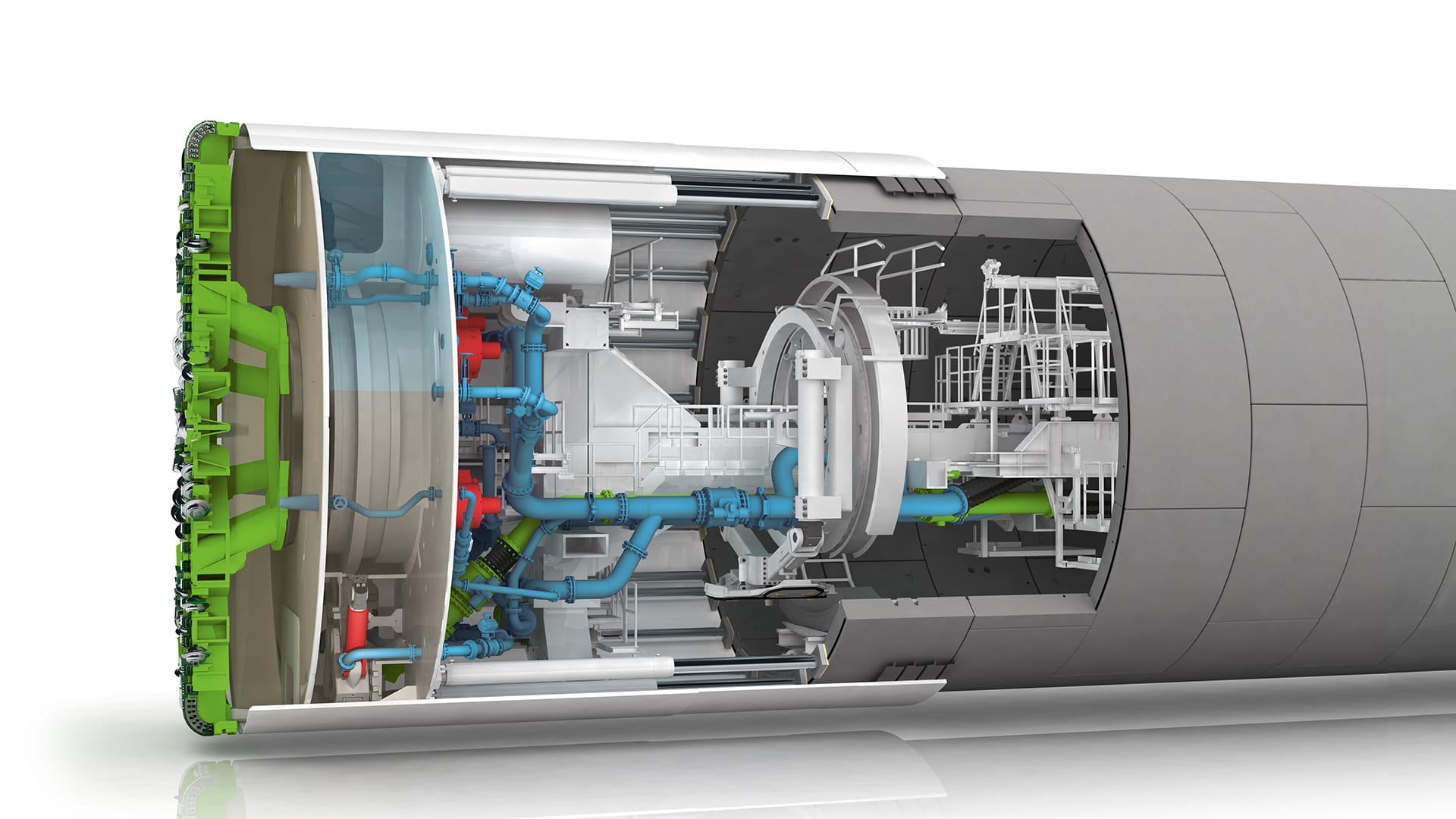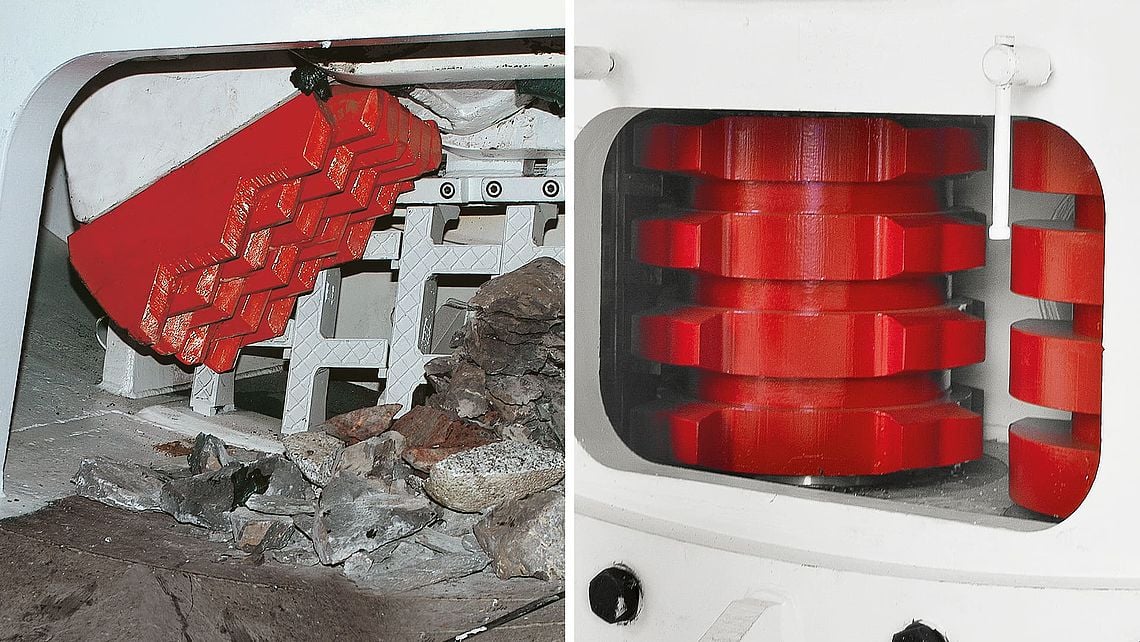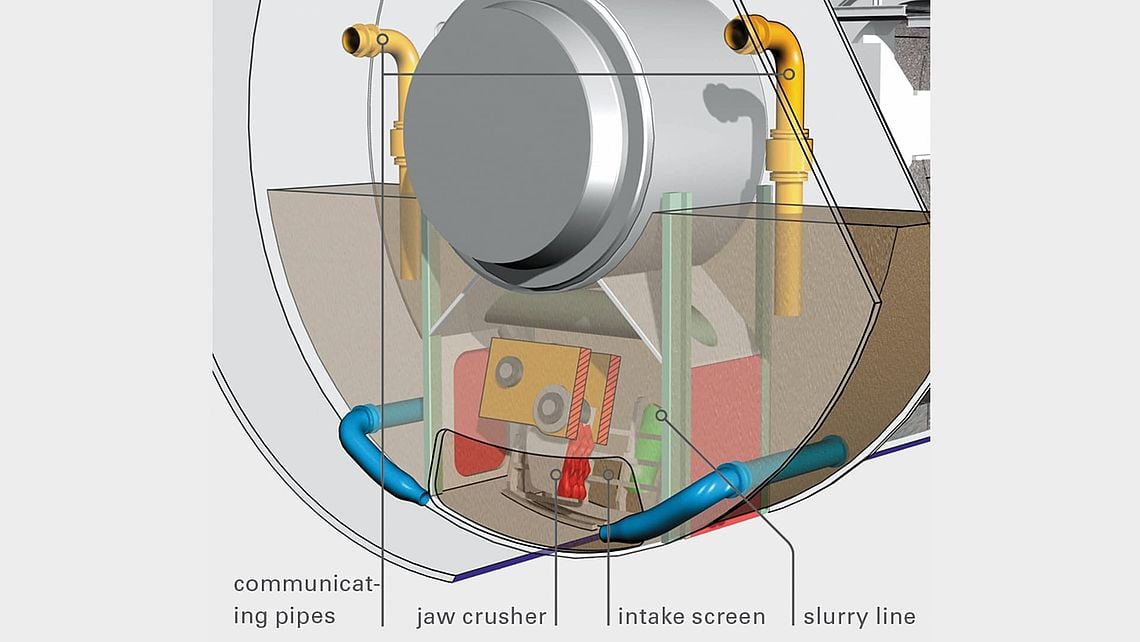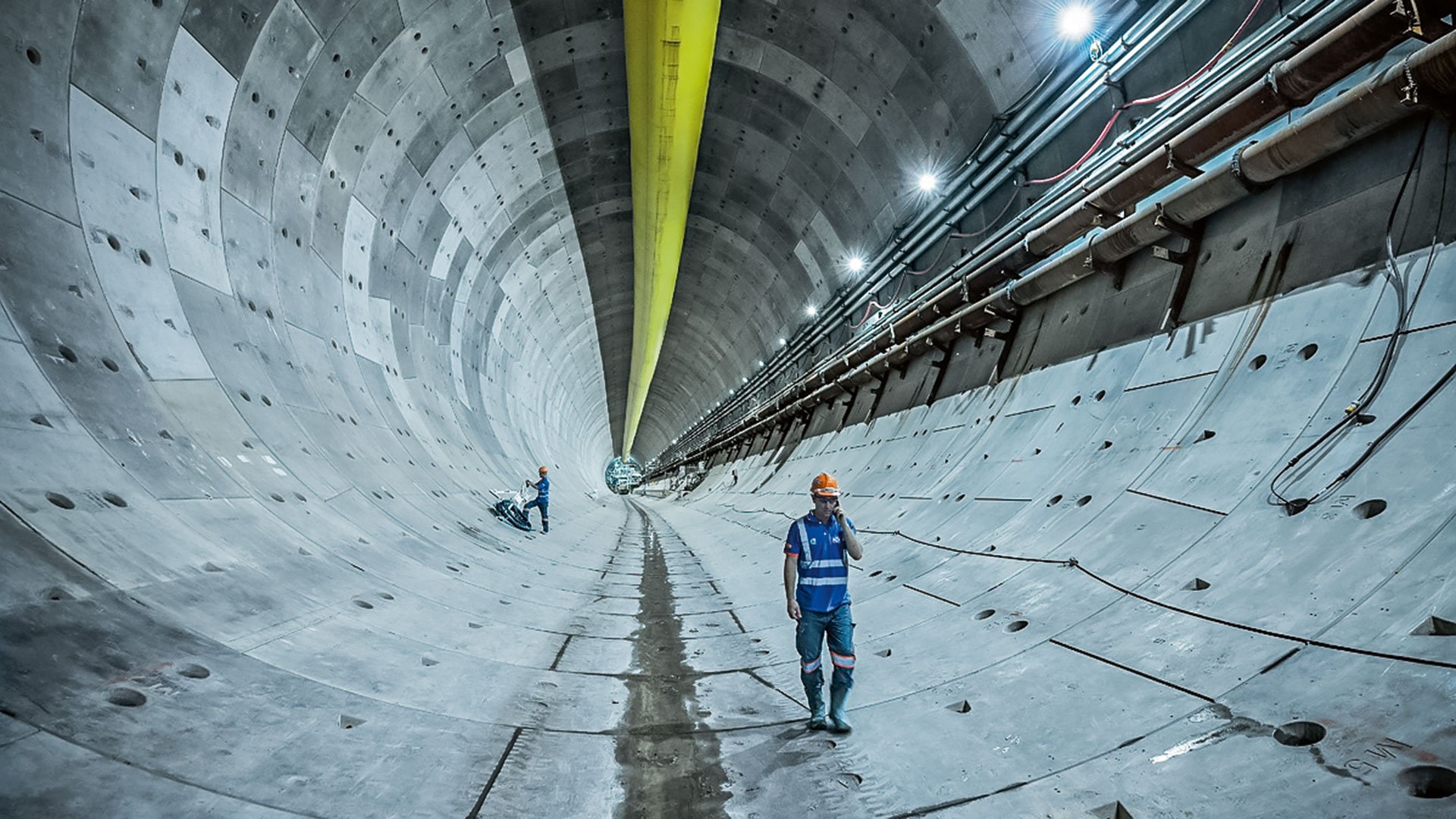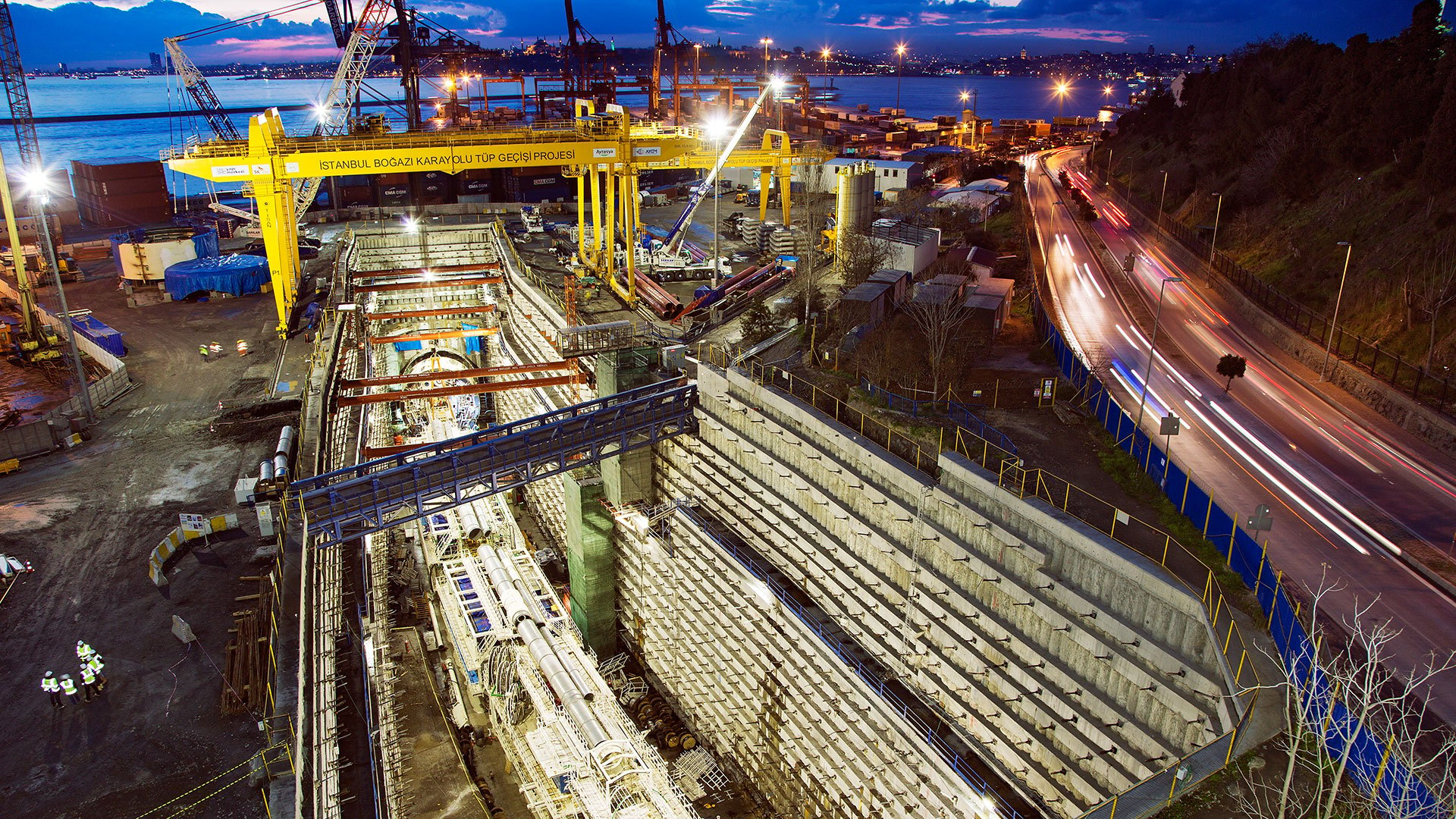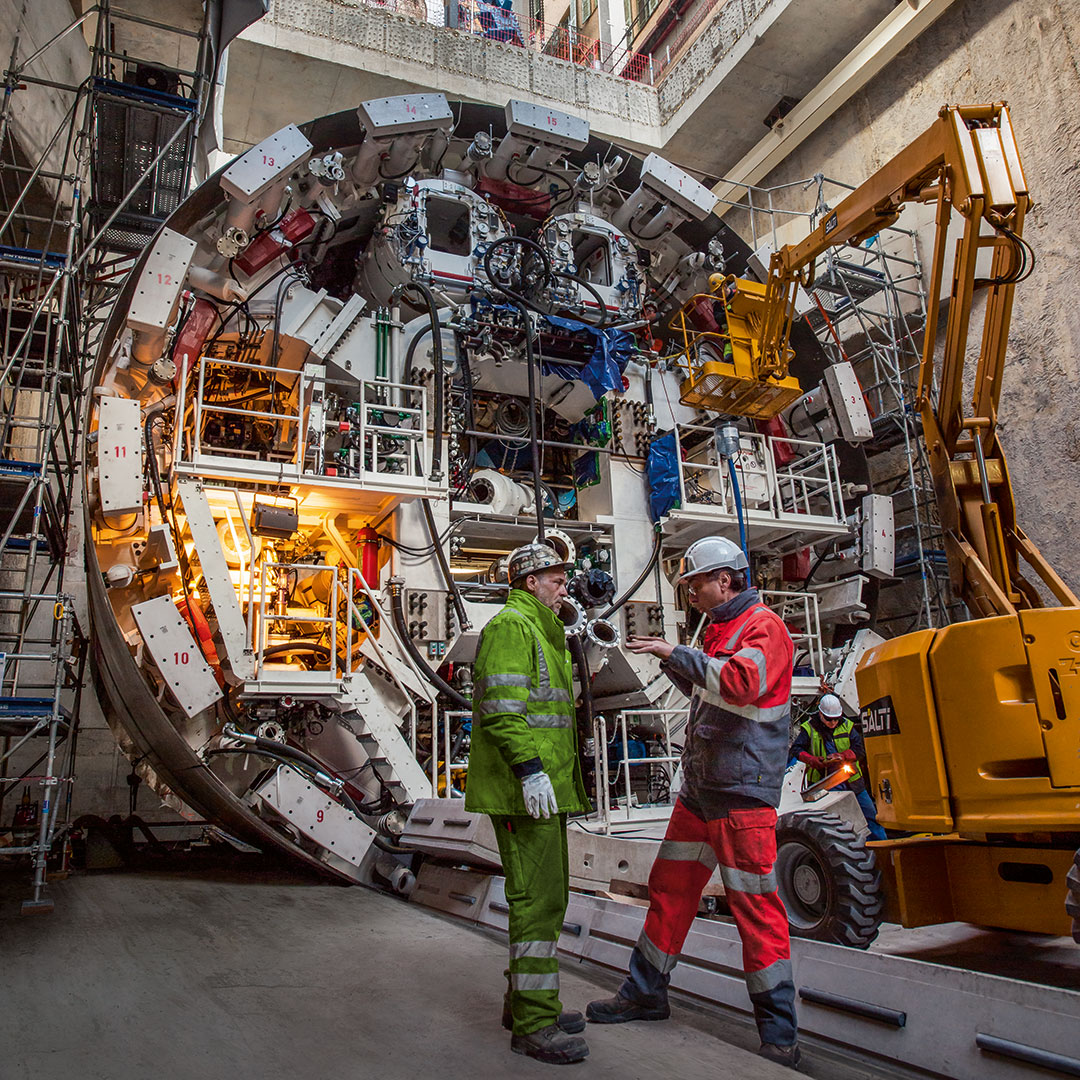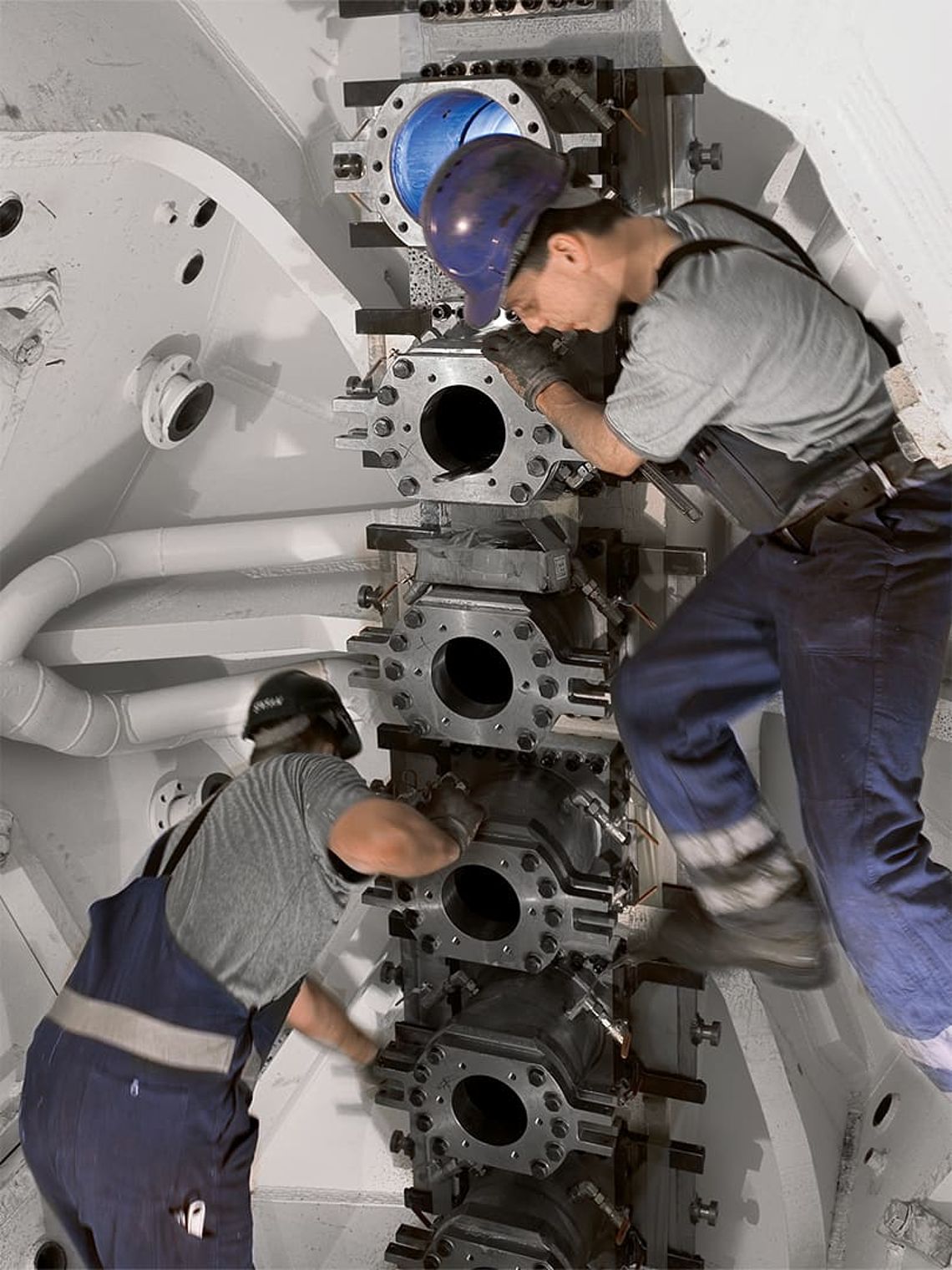Your exclusive customer link to the digital world of tunnelling
Mixshields in operation
The Mixshield technology developed by Herrenknecht is an advance on conventional slurry technology. The support pressure in the excavation chamber is precisely managed using an automatically controlled air cushion. This means that heterogeneous geologies and high water pressures of more than 15 bar can be controlled safely even with very large excavation diameters.
High safety due to air pressure
A characteristic feature of Mixshields is an excavation chamber that is divided by a so-called submerged wall. The front section of the excavation chamber is completely filled with suspension for full tunnel face support during tunnelling. In the rear section between submerged wall and bulkhead (working chamber) the suspension reaches up to only just above the machine axis. The counter-pressure needed at the tunnel face is supplied using a compressible air cushion in the upper section. Communication between the two chambers takes place through a submerged wall opening in the invert section.
Sealing against high water pressures
Mixshields can be used safely even with high water pressures of more than 15 bar due to their closed hydraulic slurry circuit. However, this requires a sealing layer between the machine and the ground to be excavated. This is why Mixshields are equipped with a multiple sealing system. The main drive seal is designed as a system with individual sealing chambers containing pressurized sealant. At the rear of the machine, the annular gap between the inside of the tailskin and the outside of the segmental lining is sealed with multiple wire brushes to keep out the soil and groundwater.
Conveying to measure
In typical Mixshield tunnelling operations in incohesive, heterogeneous soils, larger stones or blocks must be expected. Such boulders need to be crushed to a conveyable size so that hydraulic removal can be carried out smoothly. Mixshields often use a jaw crusher for this purpose, which is positioned in front of the intake screen. The size of the crushable stones varies according to the design of the crusher and the shield diameter. In addition, an intake screen is installed in front of the suction port of the slurry line to protect the machine against grain sizes that might cause problems. It holds up boulders until the crusher has crushed them sufficiently. If there are fine-grained, cohesive soils along the alignment, drum crushers are installed in front of the intake as an alternative. They carry out the intake screen function during the crushing process. Two lateral agitators support the flow of material in the invert section.
Operating principle at a glance:
Cutting knives and disc cutters remove the soil
Hydraulic support using slurry suspension with a controlled pressurized air cushion
Hydraulic conveyance of the excavated material through a closed slurry circuit
Hydraulic thrust cylinders in the shield push the machine forward
Segmental lining
Measures against clogging
Clogging at the cutting wheel and in the excavation chamber can cause increased wear and tear and reduce the advance rate. Therefore, Herrenknecht has developed a range of special solutions to optimize the flow of material. This includes:
- Cutting wheels with a relatively open center section allowing optimum flow of the excavated material
- Increased flow rate of suspension in zones prone to clogging by optimizing the hydraulic feed and conveying scheme
- Separate slurry systems with adjustable nozzles in the cutting wheel arms, the submerged wall, the submerged wall opening, the crusher and the intake screen
The flow of material is also supported by the design of the excavation chamber. Features such as smooth shield edge and submerged wall surfaces, coating of parts of the cone in the shield section, reduced submerged wall openings or optional buckets in the rear have often proved their value in practice.
Improved flow of material in cohesive soils
The isolated invert is a solution that has been especially developed for cohesive soils. The invert section is isolated from the rest of the working chamber with closing plates, enabling a closed flow of material from the excavation chamber through the submerged wall opening to the slurry line suction port. The flow captures the excavated soil, avoiding deposits or clogging in the invert section. This reduces the number of cleaning operations in the excavation chamber. Pressure fluctuations at the tunnel face due to machine standstills can thus be avoided to a large extent. Here, the pressure communication between working and excavation chamber takes place by means of two pressure balance lines, or communicating pipes, and not through the submerged wall opening.
Optimized maintenance of excavation tools
During Mixshield tunnelling, a filter cake forms at the interface between ground and bentonite suspension. This almost impermeable membrane enables the necessary support pressure and makes it possible to seal the tunnel face against streaming groundwater at the same time. During the tunnelling process, the cutting wheel, excavation tools and a number of other components must be controlled, maintained or cleaned and obstructions must be removed. For this purpose, the suspension in the working and excavation chambers is partly lowered by introducing compressed air. By closing the submerged wall opening, the suspension in the working chamber can be lowered to a minimum, allowing work in the invert section. The maintenance personnel enter the pressurized chamber through an air lock. With chamber pressures of more than 3.6 bar, work under compressed air conditions is preferably carried out by professional divers. Herrenknecht is working closely with specialized companies to provide targeted pre-training in the factory in order to keep work periods in the tunnel as short as possible.
Easy replacement of excavation tools thanks to special solution
Time-intensive hyperbaric interventions for the maintenance of excavation tools with large machine diameters have become obsolete due to a special development from Herrenknecht. The main arms of the cutting wheel are built in such a way that they can be accessed under atmospheric conditions. The worn excavation tools can be replaced from inside the cutting wheel without reducing the suspension level and without longer interventions in tunnelling.
Safe, flexible and cost-efficient
Mixshields from Herrenknecht are specialized in tunnelling through complex ground conditions, especially with high water pressures and very large diameters. Due to tunnel face support by an automatically controlled air cushion, sudden pressure and volume fluctuations can be balanced precisely. This ensures maximum tunnelling safety, even in demanding tunnel projects and greatly minimizes the risk of heave and settlement at the surface.
Still got questions?
We are ready!
